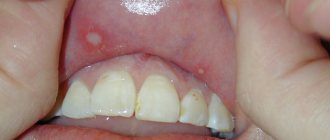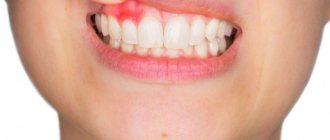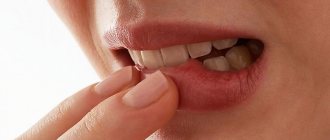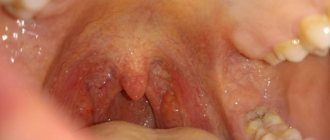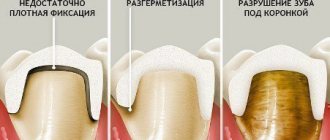The most common form of jaw injury is a bruise. No one is immune from this. For example, with a strong blow to the jaw, soft tissues, blood vessels, and capillaries are affected, resulting in the formation of hematomas and swelling. This is accompanied by severe pain and discomfort.
To avoid complications, it is recommended to consult a doctor immediately after injury. The fact is that impaired jaw function entails a chain of negative consequences: difficulties while eating, deterioration in the quality of spoken speech, etc.
What causes bruises?
Jaw injury may result from:
- falls;
- blow;
- fights;
- children's games;
- accidents, etc.
The severity of the injury is determined taking into account the following factors:
- features of the surface or object that caused the injury;
- impact intensity;
- affected area of the face;
- condition of bone tissue before the incident.
The strength of the bruise and possible complications depend on the listed indicators. Regardless of the severity, it is important to see a doctor to evaluate the condition and prescribe appropriate treatment. This will avoid unforeseen consequences and quickly restore the damaged area.
Fracture of the lower jaw
In case of severe traumatic injury to the lower jaw, a fracture of the articular process is often diagnosed. Quite often, injuries occur in the projection of the mental process, the middle of the bone body.
Symptoms of a mandibular fracture
There are several main signs of a fracture:
- the presence of pain, which intensifies when trying to speak;
- facial asymmetry;
- local swelling;
- malocclusion;
- hematoma formation.
One of the symptoms of injury is numbness in a certain area of the face. With such damage, hyperemia of the skin is observed, accompanied by a local increase in temperature. Symptoms such as increased tooth sensitivity and a feeling of double vision may also occur.
Clinical picture
First of all, the doctor conducts a visual examination of the bruised area to identify hidden injuries that cannot be identified by a person without medical education. For example, symptoms of dislocations or fractures may not appear immediately. Professional consultation allows you to begin timely treatment, if required.
To recognize a jaw bruise, it is important to pay attention to the following symptoms:
- severe pain in the place where the blow fell, intensifying when pressed;
- visual signs (eg, swelling, redness, abrasions, bruises);
- limitation of jaw mobility when yawning, talking, chewing;
- inflammation of the lymph nodes;
- general weakness.
Jaw bruises are less dangerous than more severe injuries, so recovery is usually quick.
The doctor may order an x-ray or computed tomography to establish an accurate diagnosis. These studies will assess the condition of the internal tissues of the affected area.
Additional measures to prevent hematomas
To reduce the risk of blood balloons swelling on the oral mucosa, patients are advised to follow a few simple rules:
- avoid salty and spicy foods that irritate the mucous membranes;
- adjust the design of prostheses and orthopedic systems for the jaw apparatus;
- increase the amount of medium-temperature liquid and semi-liquid foods in the diet
We should also not forget about the need to regularly visit the dentist for the timely detection and elimination of diseases of the teeth and gums. This solution will help maintain oral health and avoid a number of serious pathologies with unpleasant symptoms.
Primary treatment
A bruise can be diagnosed by external signs even before seeing a doctor. To eliminate pain and discomfort, it is recommended to perform the following measures:
- apply a tight bandage;
- Apply a cold compress to the bruised area.
For quick and painless treatment, the face must be at rest. It is better to avoid warming compresses, as they can lead to the development of inflammatory processes.
The consequences of bruises can be such conditions as fractures, fractures, dislocations of the hard tissues of the jaw and even a concussion. Treatment differs depending on each case, so you should not self-medicate. It is also worth noting that most injuries have similar symptoms, so they are easy to confuse. Only a doctor can make a correct diagnosis. If you cannot go to the hospital yourself, it is recommended to call emergency medical help.
Medical care for jaw injuries
There is no specific treatment plan in such cases. But there is a list of general recommendations. Visits to the doctor are usually limited to one visit to evaluate the x-ray or CT scan.
If the patient escaped with an ordinary bruise, then treatment will be carried out at home. The patient will be given a bandage to hold the bones in the correct position. As mentioned above, you need to apply cold compresses. Ice, snow, and sterile gauze moistened with cold water are suitable for these purposes. Warming the affected area is contraindicated to avoid inflammation and worsening the clinical condition.
To eliminate pain, taking analgesics is allowed. Following simple rules will allow you to quickly get rid of the consequences of a bruise and return to your normal life.
Likely consequences
Any injury with negligence and non-compliance with medical recommendations can lead to all sorts of complications. If we talk about a bruise of the jaw, then it can develop into a post-traumatic form of periostitis, myositis or deformation of bone tissue. Any complications will require lengthy and likely expensive treatment. Injury to the masticatory muscles can cause limited mobility of the lower jaw, complicate chewing and swallowing, which directly affects the state of the gastrointestinal tract and metabolic functions of the body.
Jaw pain: causes and consequences
Pain in the jaw can be caused by many reasons, ranging from mechanical injuries to inflammatory processes and cancer. What to do in each of the above cases?
Infectious processes in the jaw (osteomyelitis)
Osteomyelitis is a purulent-infectious disease of bone tissue. It can occur when there is a focus of inflammation in the mouth, ear, throat, and also as a complication of a jaw fracture. There are acute and chronic forms of osteomyelitis. In acute inflammation, general symptoms characteristic of infectious diseases predominate: weakness, fever, headache. Pain sensitivity in the jaw can be either local or radiating to the temple, orbit and extending beyond the jaw. If the cause of inflammation in the jaw is unknown, then you should first consult a dentist to rule out odontogenic osteomyelitis, since it is the most common type of the disease.
Osteogenic sarcoma
This is a malignant neoplasm that forms from bone tissue. It begins with muffled pain, which intensifies more and more, especially when palpated. To accurately diagnose the disease, it is necessary to undergo X-ray diagnostics from a maxillofacial surgeon or dentist and then contact an oncologist.
Temporomandibular joint problems
The function of the jaw joint can be impaired due to injury, malocclusion, inflammatory diseases of the jaw joint, and neurological problems with the jaw muscles. Since a common cause of joint dysfunction is muscle overstrain, in this case not only the jaw hurts during talking and chewing, but pain can also occur in the face, neck, near the ear, and headaches can occur.
At the medical center, a maxillofacial surgeon will advise you and diagnose you regarding jaw joint dysfunction.
Neuralgia
Neuralgia is a disease that affects peripheral nerves, mainly passing through narrow canals. The jaw can hurt with neuralgia of the ear ganglion (acute pain from hot and cold, going from the temple to the teeth), the upper laryngeal nerve (pain in the hyoid bone), with cranial neuralgia (pain behind the ear and in the lower jaw). In these cases, you will need to consult a neurologist.
Carotidynia syndrome
In diseases of the carotid artery, migraine and temporal arteritis, carotidynia may occur, which is a long-term (up to several hours) pain syndrome affecting, in addition to the areas of the face and neck, the lower jaw.
First aid
Before proceeding with the treatment of the emerging pathology, the victim should be given first aid and taken for examination to a traumatologist in order to refute more serious damage to the bones of the skull (fracture, dislocation, displacement).
First of all, it is necessary, using available auxiliary items, to ensure cooling of the injured area. If the injury occurred at home, it is recommended to apply ice, frozen meat, vegetables or fruits to the bruised area of skin.
It is worth remembering that direct contact of the cold compress with the skin is not allowed. It is better to wrap ice products with a towel, rag or bag.
If the injury occurred on the street or in another place where it is not possible to get ice from the refrigerator, doctors recommend using snow, rags (pieces of things) soaked in cold water, bottles of cold water or iron tools. In such situations, it is also very important to avoid direct contact of the object with the skin, because you can introduce an unfavorable infection into the resulting wound area.
To eliminate excessively intense pain, you can take a non-steroidal painkiller.
Under no circumstances should heating the damaged area be allowed. Such manipulations do not improve, but only worsen the situation.
The jaws, the field of a cold compress, should be kept at rest (wrap with a bandage or other material at hand) and go for examination to the hospital, where the doctor will tell you in more detail about the treatment of the bruise.
The likelihood of tooth loss after injury: what doctors say
Can a tooth fall out after a blow? This situation is rare, but it cannot be excluded if the supporting ligaments and periodontal tissues are severely damaged, and the person does not seek dental care for a long time.
More often, after a blow, the tooth hurts and only wobbles a little, and the gums around it are red and swollen. But even in this case, you cannot relax. According to doctors, against this background traumatic gingivitis and periodontitis can develop. These diseases, with inadequate treatment and careless attitude to oral hygiene, progress and become generalized (spread to the entire range). Advanced periodontitis is also fraught with loosening and loss of moving elements.
Restoration activities
During the entire recovery period, experts recommend rinsing your mouth daily: between meals, after meals. In this case, antiseptic solutions should be used:
- "Chlorhexidine";
- "Furacillin".
When rinsing, use an Esmarch mug. It must be filled with an antiseptic solution, hung near the washbasin and the rubber tube securely attached.
Use a toothpick to clean the mouth from food debris. You need to use a toothbrush and toothpaste twice a day. After cleansing procedures, massage the gums. This procedure is designed to enhance local blood circulation.
At the rehabilitation stage after the occurrence of cracks in the jaw, physiotherapeutic procedures are used. They are designed to reduce pain and eliminate swelling. To achieve stable results, physiotherapy sessions are carried out in courses. Magnetic therapy, infrared radiation, electrophoresis, and UHF therapy are especially effective.
Another effective rehabilitation method is therapeutic exercises. Special exercises are done while sitting, lying or standing. They are selected taking into account the severity of the victim’s condition. A therapeutic gymnastics session begins with a gentle massage of the facial muscles. After this, do exercises to strengthen the muscles of the shoulders and neck.
In addition, it is worth periodically clenching and unclenching your jaw. This helps develop facial muscles.
Diagnosis of pathology in the dental office
If your tooth hurts or becomes numb after an impact, or if it has moved, you should immediately consult a dentist. The specialist will conduct an external examination and palpation. The doctor will also definitely send you for an X-ray examination to determine the condition of the tissues and their integrity, detect internal damage, and differentiate the bruise from other possible injuries (fracture, dislocation, crack). In order to check the condition of the pulp, to identify traumatic pulpitis and periodontitis, electroodontic diagnostics (EDD) can be performed.
Causes
A bruise of the lower or upper jaw can occur as a result of:
- Domestic conflict between people;
- Falls from a height;
- Road traffic accident;
- Falls during icy conditions;
- Unsafe sports;
- Failure to comply with safety rules on the road, work or other areas;
- Excessively active rest;
- Childish, careless games.
To avoid such injuries, it is recommended to be careful, not to get involved in various kinds of conflicts and to follow all existing safety rules.
Statistics data
Most often, a tooth bruise occurs in adults who play sports. This problem accounts for 1.5% of the total number of injuries in the permanent dentition. But the main record holders for those diagnosed with this pathology are children. Little fidgets are constantly in motion, falling, hitting various objects, and all this against the background of insufficiently developed coordination. A bruise of a baby tooth is detected in 2.5% of situations among all traumatic injuries (fractures, cracks, dislocations).
Which elements of the series are more likely to be injured than others? The vast majority of people get a bruise on their front tooth - an incisor or canine. It is these elements of the series that are at the forefront of the smile and take the brunt. They are also thinner and more fragile than their chewable counterparts.
Classification of jaw fractures
Fractures can be classified according to a variety of criteria:
- in relation to the area of injury - indirect and direct;
- according to the number of fragments - double, single, multiple.
Types of jaw fractures by severity of injury
According to the severity of the injury, fractures are divided into closed and open. An open fracture is characterized by:
- damage to mucous membranes and muscles;
- bulging and displacement of parts of the bone;
- violation of the integrity of the skin.
With an open fracture, there is a high risk of infection of the damaged tissue. When closed, in turn, only the bone is injured. In this case, there is no violation of the integrity of soft tissues.
Types of jaw fractures based on displacement of fragments
Displacement injuries are usually the result of severe physical impact. In this case, bone fragments move in relation to other bones, to each other. There are three types of displacement (venital, sagittal, transversal).
Types of jaw fractures by location of injury
In case of single fractures of the articular process of the lower jaw, two fragments of different sizes are formed. The smaller of them moves down (until it comes into contact with the upper units of the dentition).
Important! In case of double fractures, the middle one of the fragments is displaced downward (inside by the mylohyoid muscle attached to it), the larger one - downwards and towards the middle fragment, the smaller one - upwards. In the event of multiple fractures, bone fragments are displaced in different directions (under the influence of the bundles attached to them).
Maxillary fracture
Injuries to the upper jaw are diagnosed relatively less frequently (about 30% of the total number of injuries to the bone structures of the dental system). Such fractures are in most cases accompanied by a concussion.
Symptoms of a fracture of the upper jaw
When the maxillary bones are damaged, the following are observed:
- vomit;
- nausea;
- severe pain syndrome;
- the occurrence of sharp pain when chewing;
- difficulty speaking;
- deterioration of respiratory function.
Diet
If the mandibular bones are fractured, immediately after the injury the patient is unable to chew. Therefore, he receives exclusively liquid food. Patients are fed through a straw or nasogastric tube.
There are two types of diet recommended for a fracture of the lower jaw:
- first table. It is prescribed for problems with swallowing and chewing food. The recommended calorie intake is 3000 kcal per day. The consistency of the food is similar to heavy cream. The first table provides feeding through a tube;
- second table. It is used if the patient is able to open his mouth. The consistency of the food is similar to thick sour cream.
After the victim is discharged from the medical facility, the following products are recommended:
- vegetable and fruit juices;
- fermented milk products;
- meat broth;
- fruit drinks and compotes.
When preparing food after the patient is discharged from the hospital, a blender is used. This device helps grind food to a liquid consistency.



